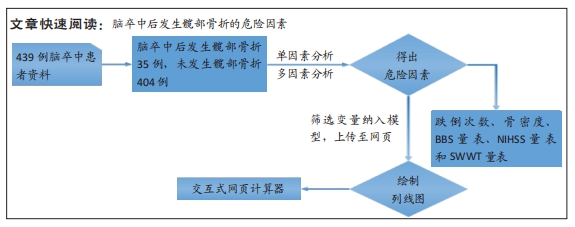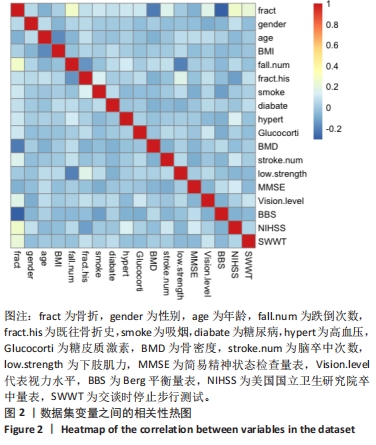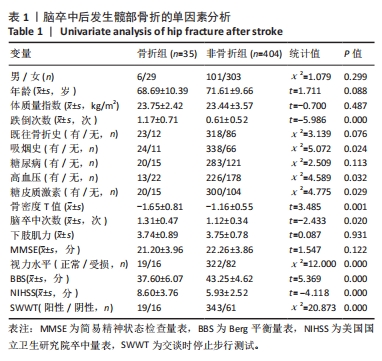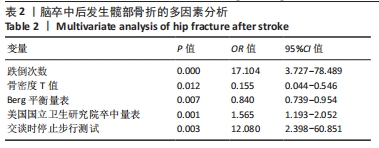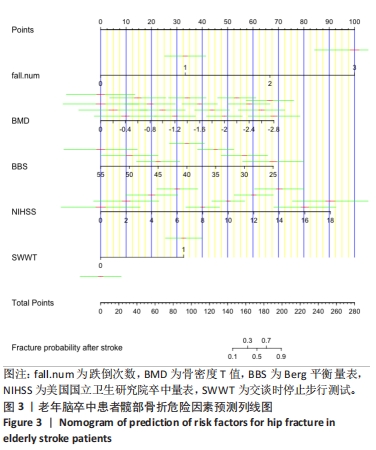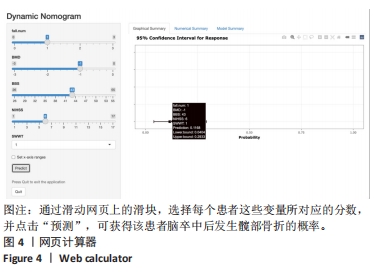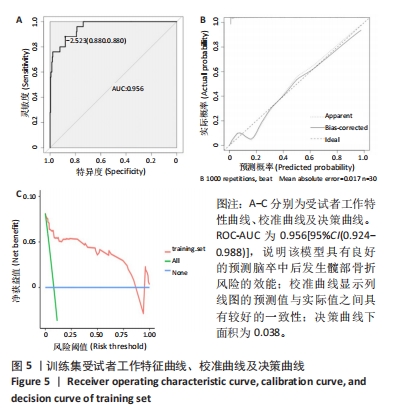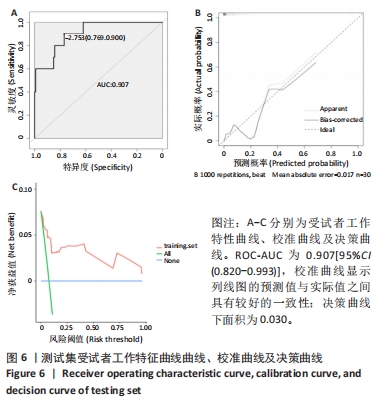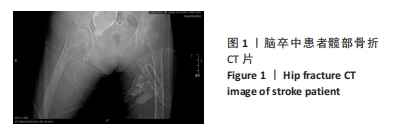[1] LISABETH LD, MORGENSTERN LB, WING JJ, et al. Poststroke fractures in a bi-ethnic community. J Stroke Cerebrovasc Dis. 2012;21(6):471-477.
[2] RAMNEMARK A, NYBERG L, BORSSÉN B, et al. Fractures after stroke. Osteoporos Int. 1998;8(1):92-95.
[3] KERSE N, PARAG V, FEIGIN VL, et al. Auckland Regional Community Stroke (ARCOS) Study Group. Falls after stroke: results from the Auckland Regional Community Stroke (ARCOS) Study, 2002 to 2003. Stroke. 2008;39(6):1890-1893.
[4] CALLALY EL, NI CHROININ D, HANNON N, et al. Falls and fractures 2 years after acute stroke: the North Dublin Population Stroke Study. Age Ageing. 2015;44(5):882-886.
[5] WHITSON HE, PIEPER CF, SANDERS L, et al. Adding injury to insult: fracture risk after stroke in veterans. J Am Geriatr Soc. 2006;54(7): 1082-1088.
[6] ZHOU M, WANG H, ZENG X, et al. Mortality, morbidity, and risk factors in China and its provinces, 1990-2017: a systematic analysis for the Global Burden of Disease Study 2017. Lancet. 2019;394(10204):1145-1158.
[7] DENNIS MS, LO KM, MCDOWALL M, et al. Fractures after stroke: frequency, types, and associations. Stroke. 2002;33(3):728-734.
[8] POUWELS S, LALMOHAMED A, LEUFKENS B, et al. Risk of hip/femur fracture after stroke: a population-based case-control study. Stroke. 2009;40(10):3281-3285.
[9] MARSDEN J, GIBSON LM, LIGHTBODY CE, et al. Can early onset bone loss be effectively managed in post-stroke patients? An integrative review of the evidence. Age Ageing. 2008;37(2):142-150.
[10] JØRGENSEN L, JACOBSEN BK. Functional status of the paretic arm affects the loss of bone mineral in the proximal humerus after stroke: a 1-year prospective study. Calcif Tissue Int. 2001;68(1):11-15.
[11] POOLE KE, REEVE J, WARBURTON EA. Falls, fractures, and osteoporosis after stroke: time to think about protection? Stroke. 2002;33(5):1432-1436.
[12] KEENE GS, PARKER MJ, PRYOR GA. Mortality and morbidity after hip fractures. BMJ. 1993;307(6914):1248-1250.
[13] NHO JH, LEE YK, KIM YS, et al. Mobility and one-year mortality of stroke patients after hip-fracture surgery. J Orthop Sci. 2014;19(5):756-761.
[14] VAN DER BURG DA, DIEPSTRATEN M, WOUTERSE B. Long-term care use after a stroke or femoral fracture and the role of family caregivers. BMC Geriatr. 2020;20(1):150.
[15] JANSSON S, SÖDERLUND A. A new treatment programme to improve balance in elderly people--an evaluation of an individually tailored home-based exercise programme in five elderly women with a feeling of unsteadiness. Disabil Rehabil. 2004;26(24):1431-1443.
[16] SAHIN F, YILMAZ F, OZMADEN A, et al. Reliability and validity of the Turkish version of the Berg Balance Scale. J Geriatr Phys Ther. 2008; 31(1):32-37.
[17] PATNODE CD, PERDUE LA, ROSSOM RC, et al. Screening for Cognitive Impairment in Older Adults: Updated Evidence Report and Systematic Review for the US Preventive Services Task Force. JAMA. 2020;323(8):764-785.
[18] FOLSTEIN MF, FOLSTEIN SE, MCHUGH PR. “Mini-mental state”. A practical method for grading the cognitive state of patients for the clinician. J Psychiatr Res. 1975;12(3):189-198.
[19] KWAH LK, DIONG J. National Institutes of Health Stroke Scale (NIHSS). J Physiother. 2014;60(1):61.
[20] BENTLER SE, LIU L, OBRIZAN M, et al. The aftermath of hip fracture: discharge placement, functional status change, and mortality. Am J Epidemiol. 2009;170(10):1290-1299.
[21] FISHER AA, DAVIS MW, RUBENACH SE, et al. Outcomes for older patients with hip fractures: the impact of orthopedic and geriatric medicine cocare. J Orthop Trauma. 2006;20(3):172-178; discussion 179-180.
[22] VERONESE N, MAGGI S. Epidemiology and social costs of hip fracture. Injury. 2018;49(8):1458-1460.
[23] SING CW, LIN TC, BARTHOLOMEW S, et al. Global Epidemiology of Hip Fractures: Secular Trends in Incidence Rate, Post-Fracture Treatment, and All-Cause Mortality. J Bone Miner Res. 2023;38(8):1064-1075.
[24] WEERDESTEYN V, DE NIET M, VAN DUIJNHOVEN HJ, et al. Falls in individuals with stroke. J Rehabil Res Dev. 2008;45(8):1195-1213.
[25] CALLALY EL, NI CHROININ D, HANNON N, et al. Falls and fractures 2 years after acute stroke: the North Dublin Population Stroke Study. Age Ageing. 2015;44(5):882-886.
[26] WANG HP, SUNG SF, YANG HY, et al. Associations between stroke type, stroke severity, and pre-stroke osteoporosis with the risk of post-stroke fracture: A nationwide population-based study. J Neurol Sci. 2021; 427:117512.
[27] URRUNAGA-PASTOR D, MONCADA-MAPELLI E, RUNZER-COLMENARES FM, et al. Factors associated with poor balance ability in older adults of nine high-altitude communities. Arch. Gerontol. Geriatr. 2018;77: 108-114.
[28] BORSCHMANN K, PANG MY, BERNHARDT J, et al. Stepping towards prevention of bone loss after stroke: a systematic review of the skeletal effects of physical activity after stroke. Int J Stroke. 2012;7(4):330-335.
[29] SCHNITZER TJ, HARVEY RL, NACK SH, et al. Bone mineral density in patients with stroke: relationship with motor impairment and functional mobility. Top Stroke Rehabil. 2012;19(5):436-443.
[30] POOLE KE, REEVE J, WARBURTON EA. Falls, fractures, and osteoporosis after stroke: time to think about protection? Stroke. 2002;33(5):1432-1436.
[31] ENG JJ, PANG MY, ASHE MC. Balance, falls, and bone health: role of exercise in reducing fracture risk after stroke. J Rehabil Res Dev. 2008; 45(2):297-313.
[32] JØRGENSEN L, JACOBSEN BK. Changes in muscle mass, fat mass, and bone mineral content in the legs after stroke: a 1-year prospective study. Bone. 2001;28(6):655-659.
[33] KAPRAL MK, FANG J, ALIBHAI SM, et al. Risk of fractures after stroke: Results from the Ontario Stroke Registry. Neurology. 2017;88(1):57-64.
[34] POOLE KE, LOVERIDGE N, BARKER PJ, et al. Reduced vitamin D in acute stroke. Stroke. 2006;37(1):243-245.
[35] SIGNORELLI SS, SCUTO S, MARINO E, et al. Anticoagulants and Osteoporosis. Int J Mol Sci. 2019;20(21):5275.
[36] LUTSEY PL, NORBY FL, ENSRUD KE, et al. Association of Anticoagulant Therapy With Risk of Fracture Among Patients With Atrial Fibrillation. JAMA Intern Med. 2020;180(2):245-253.
[37] SMITH EE, FANG J, ALIBHAI SM, et al. Derivation and External Validation of a Scoring System for Predicting Fracture Risk After Ischemic Stroke in a Canadian Cohort. JAMA Neurol. 2019;76(8):925-931.
[38] HSIEH CY, SUNG SF, HUANG HK. Drug treatment strategies for osteoporosis in stroke patients. Expert Opin Pharmacother. 2020;21(7):811-821.
[39] PANG MY, ASHE MC, ENG JJ. Compromised bone strength index in the hemiparetic distal tibia epiphysis among chronic stroke patients: the association with cardiovascular function, muscle atrophy, mobility, and spasticity. Osteoporos Int. 2010;21(6):997-1007.
[40] LUAN L, LI R, WANG Z, et al. Stroke increases the risk of hip fracture: a systematic review and meta-analysis. Osteoporos Int. 2016;27(11): 3149-3154.
[41] SCHMID AA, KAPOOR JR, DALLAS M, et al. Association between stroke severity and fall risk among stroke patients. Neuroepidemiology. 2010;34(3):158-162.
[42] PERSSON CU, HANSSON PO. Determinants of falls after stroke based on data on 5065 patients from the Swedish Väststroke and Riksstroke Registers. Sci Rep. 2021;11(1):24035.
[43] XU TQ, LIN WZ, FENG YL, et al. Leukoaraiosis is associated with clinical symptom severity, poor neurological function prognosis and stroke recurrence in mild intracerebral hemorrhage: a prospective multi-center cohort study. Neural Regen Res. 2022;17(4):819-823.
[44] LUNDIN-OLSSON L, NYBERG L, GUSTAFSON Y. “Stops walking when talking” as a predictor of falls in elderly people. Lancet. 1997;349(9052):617. |
